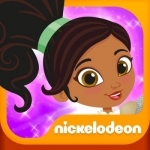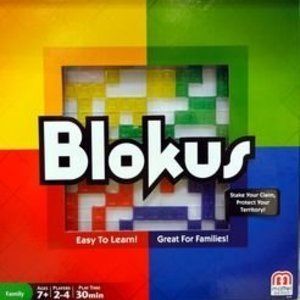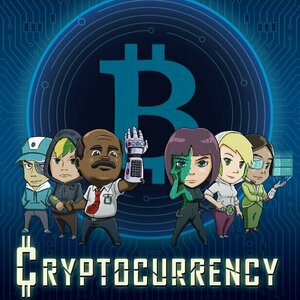
AniMatch: Animal Pairs and Sounds Matching Game
Games and Entertainment
App
AniMatch is great FUN for kids and adults alike! "This is a MUST HAVE APP for anyone with an...

Tableau d'école pour iPhone et iPod : Ecrivez et dessinez en couleur, même sur vos photos !
Entertainment and Productivity
App
Want to make a drawing, play Tic Tac Toe? Need to quickly record a telephone number or code of the...

My Bakery Empire
Games and Entertainment
App
~~> Help Lizzie open up world-famous bakeries and take specific orders from her demanding customers!...

Korean Video Dictionary - Translate, Learn and Speak with Video
Travel and Reference
App
Do you ever wish when traveling that you could have someone who could teach you their local language...

BabyTV Video: Kids Shows & Nursery Rhymes, Baby TV
Education and Entertainment
App
Award winning kids app, loved by parents and babies worldwide. Features hundreds of early-learning...

Hopscotch: Learn to Code
Education and Games
App
Hopscotch is a free, award-winning programming app for kids aged 9-13. Downloaded over 10 million...

Prodigy Math Game
Education and Games
App
Join over 15 million teachers and students already using Prodigy to learn math for free! With over...

Nella The Princess Knight
Education and Games
App
Help Nella and her friends on their courageous adventures; shoot arrows to help the lost birds find...

Blokus
Tabletop Game
Blokus (officially pronounced "Block us") is an abstract strategy game with transparent,...
Boardgames KidsGames AbstractGames
Purple Phoenix Games (2266 KP) rated Cryptocurrency in Tabletop Games
Apr 2, 2020
You are the CEO of a fin-tech startup company. Leading a team of specialized experts, you will evaluate, trade, and mine different cryptocurrencies. Strategy is key, as you must stay ahead of the trend to maximize your earnings from the market. Can you solve the right algorithms and manipulate the network to help create the most wealth for your company? Or will you be scammed into buying worthless cryptocurrency? Play to find out!
Disclaimer: We were provided a copy of this game for the purposes of this review. This game is available to purchase, so the components seen in the pictures are what come with the game. I do not intend to rehash the entire rulebook in this review, but rather provide the basic ruleset and general gameplay overview of the game. Feel free to pick up a copy of the game directly from the publisher or your FLGS! -L
Cryptocurrency is a game of commodity speculation, action points, trading, and a little push your luck in which players are trying to amass the most amount of money over 5 rounds. To setup the game, place the Cryptocurrency Info Boards in the center of the play area, and place the Market Board next to them. Prepare and distribute the Rumor cards, and create the Ongoing Transactions deck. Each player receives a player reference card, 3 Intern Expert cards, and a total of 6 Wonga (the currency of the game). The game is now ready to begin! Each round is broken up into 4 phases: Prep, Action, Upkeep, and Rumor. During the Prep phase, each player (in turn order) must draw a Rumor card, and may hire a new Expert or take a loan. Experts are hired (purchased) from the Job Seekers pile, and often provide special abilities or increased Action Points. Hired Experts must replace one Expert from their existing team. Your team can only have 3 Experts, so choose wisely who to hire and fire! A loan can be taken to immediately gain 8 Wonga, but interest must be paid for the loan later in the round. After each player has performed these actions, play moves to the second phase.
During the Action phase, players take turns performing one of two actions: Mining or Trading. These actions are performed by spending Action points – each Expert offers a certain number of points to spend. Once you use an Action Point, that Expert is exhausted and can no longer work in this phase. To Mine, players choose one of the 4 available cryptocurrencies to mine (research), and will either Succeed or Fail in this endeavor. If you succeed, you create and earn coins from that specific cryptocurrency, as well as any extra money earned from completing ongoing transactions. If you fail, your turn immediately ends. To take the Trade action, players will either Buy or Sell coins to/from the Market. You are only allowed to buy/sell the same cryptocurrency each turn, and you may buy/sell up to 4 coins each turn. For every 4 coins bought, the Market Board shifts to increase that currency’s price by 1 Wonga. For every 4 coins sold, the Market decreases by 1 Wonga. Once every player is out of Action Points, this phase is over.
In the Upkeep phase, players refresh all Experts, pay interest on any Loans, or completely pay off a Loan. The final phase, Rumor, moves in counter-clockwise order. Players take turns adding their secret Rumor card to the Rumor Track of one of the 4 cryptocurrencies. The market values are adjusted based on the Rumors played, and any face-down Rumor cards will affect the end-game value of the currencies. Play then returns to the Prep phase, and continues until 5 rounds have been completed. Players determine which cryptocurrency was a scam, sell any remaining coins, and then count up their money. The player with the most Wonga is the winner!
I have to admit that Cryptocurrency surprised me. After reading the rules and getting the game setup, I was feeling a little overwhelmed. I was prepping myself for a complicated, quasi-educational game in which I would be relatively unengaged and going through the motions each turn. What I got, however, was the complete opposite. Yes, there is a lot going on in this game, but it offers so many different mechanics and strategies for success that you’re always thinking one step ahead. There’s the aspect of bluffing when it comes to Rumor cards and manipulating the market through those means, there’s drafting of new Experts and shedding your hand of lesser-powered cards, there’s push your luck in the Mining action as the more Action Points you spend, the more opportunity you have for success. There’s not one sure strategy to win, and you are changing and adapting on every turn. You also have to be paying attention to your opponents! Although there’s not really any direct player interaction, everything you do on your turn could throw a wrench in the plans of your neighbor. Can you figure out how they’re trying to play the Market? Or will you try to fly beneath the radar and throw them off your trail?
My biggest issue with this game has to do with components. The cryptocurrency boards and the market board all work together, but they are all their own separate components. So it just makes set-up/tear-down a little more involved because instead of laying out 1 big board and adding components to it, you have to lay out and populate 5 individual boards. It just makes it a little more tedious than I would like, but honestly it has no bearing on the gameplay at all. The quality of the components is pretty good overall, the artwork is tech-influenced and fun, and the cardboard coins are nice and sturdy. So all in all, a pretty good production quality.
So what are my thoughts on Cryptocurrency? I actually liked it more than I thought I would. It’s engaging and strategic, yet relatively simple enough that it doesn’t feel like too much of a brain burner. I am no cryptocurrency expert by any means, but I feel like after playing this game, I have a better understanding of it and how it works. So mission accomplished, Captial Gains Studio – you have a fun AND educational game here. Is it one I will pull out at every game night? No. But it’s one that I am looking forward to playing again in the future. Purple Phoenix Games gives Cryptocurrency an economic 8 / 12.
